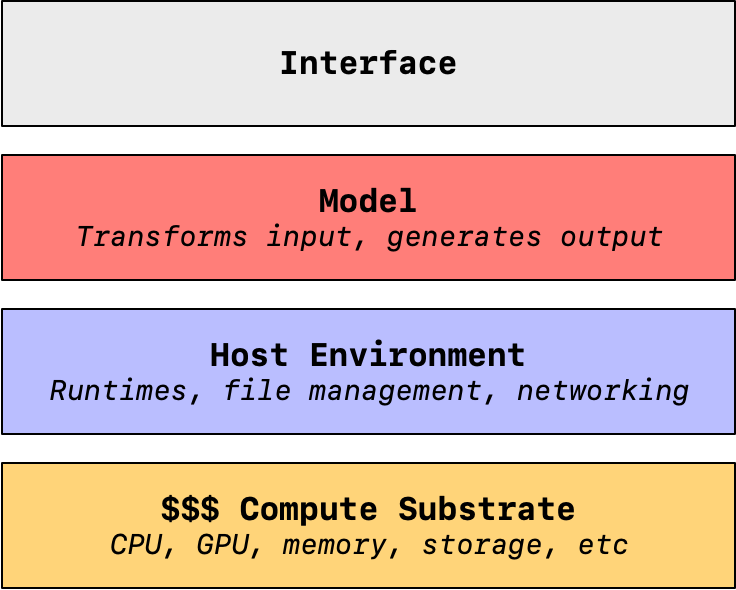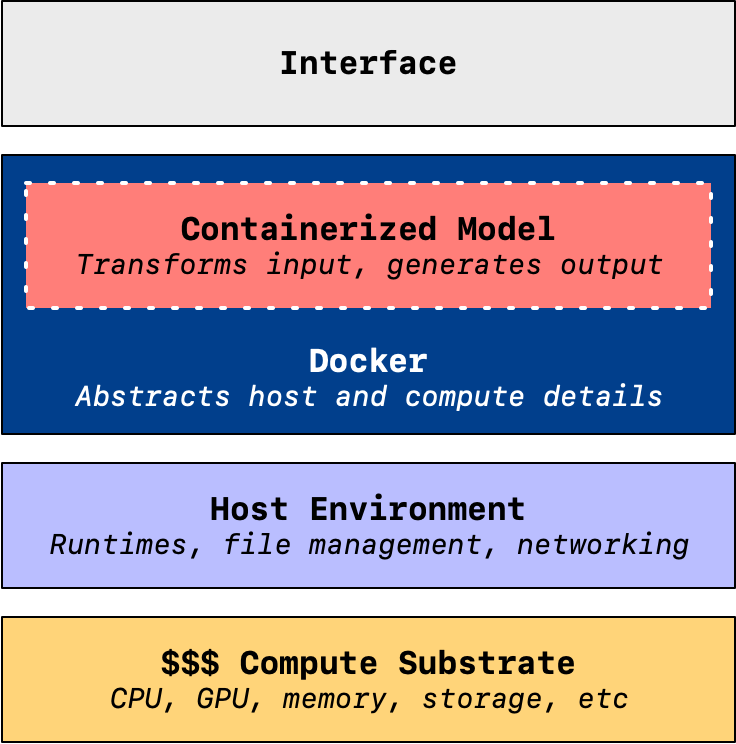Twitter, the real-time consensus engine
Contents
As Twitter shambles steadily toward its grave, I’ve been thinking about its role on the internet and our culture broadly.
Why did so many disparate groups—from politicians, journalists, activists and the posturing wealthy—all agree it was worth so much time and energy? Why did companies spend so much money not just on marketing for Twitter, but also for staffing to monitor and respond to it?
It’s not because Twitter was the largest social media platform—it wasn’t. It’s not because Twitter drives large amounts of traffic—it doesn’t.
Instead, for the last decade, Twitter has occupied a unique role: it is an engine for synthesizing and proliferating consensus, in real-time, across every conceivable topic of political and cultural concern. In this, it was a unique form of popular power, with each voice having potential standing in a given beef. Litigants were limited only by their ability to argue a case and attract champions to it.
This had both its virtues and its downsides. Still, we’d never seen anything quite like it. In the aftermath of its capture by a wealthy, preening dipshit, we may never again.
The Twitter cycle
Like other media, Twitter was subject to cyclical behavior. Unlike other media, these cycles could unspool at breakneck speed, at any time of the week.
Broadly, the cycle comprised these phases:
- Real-time event: A thing has happened. An event transpired, a statement given, a position taken. The grain of sand that makes the pearl has landed within Twitter’s maw.
- Analysis and interpretation: What does this event mean? What are the consequences? Who has been implicated? Why does it matter? What larger context is necessary to understand it? In Twitter’s deeply factionalized landscape, interpretations could be broad.
- Consensus participation: Eventually a particular interpretation reaches consensus. Traveling along the viral paths of an influential few with broad audiences, a given point of view becomes definitive within certain groups. The factions thus persuaded join the fray, contributing their agreement, or refinement. Others, either contrarian by nature, or outside the factions with consensus, may start their own interpretation, and yet another sub-cycle toward consensus may kick off.
- Exhaustion: The horse, long-dead, is now well and truly beaten. The cycle concludes, added to the annals of Twitter, waiting to be cited as precedent in the analysis of a future event. Though settled, lasting schisms may result from the fracas, the fabric of friendships and alliances torn or rended entirely.
For example: Bean Dad
In the earliest days of 2021, musician John Roderick shared a window on his parenting approach. In the process, he became caught up in the consensus engine, becoming Twitter’s main character for several days, until an attack on the US Capitol Building by far-right extremists reset the cycle.
Event: In a lengthy thread, Roderick explained how he tried to instill a sense of independence in his young daughter by offering the most minimal of assistance in the workflow of decanting some beans.
Interpretation: Maybe this is not ideal parenting. Maybe his daughter should receive more support.
Consensus: It is irrefutable: Bean Dad is a fuck. He has no place in polite society. It may be that his daughter is being starved instead of timely receiving the nourishment she needs to survive.
Exhaustion: Roderick deleted his account. His music was removed from a podcast that used it for an intro. Days later, mainstream media reported what you could learn in real-time just by keeping an eye on Twitter.
What the fuck?
Yeah, it really did work like that.
Politics is the negotiation and application of power. Twitter was a political venue in every sense of the word. Not just electoral politics, I stress here, but the everyday politics of industry, culture, even gender and sexuality. Twitter was a forum for the litigation of beefs.
You’ll see a lot of people roll their eyes at this. Dismissiveness of Twitter, though, often correlates to a sense of overall larger political power.
In our world, not everyone has a good deal. Not everyone has the basic dignity they deserve. In short, their beefs are legitimate. What was transformational about Twitter was the ability to bring your legitimate beef to larger attention, and in doing so, potentially change the behavior of those with more power.
The powerful loved Twitter. They had a shocking pattern of admissions against interest, feeding the above cycle. Twitter was a direct pipe to the minds of the wealthy, stripping past the careful handling of publicists and handlers. Rich guys could say some truly stupid shit, and everyone could see it!
I caution you against heeding the narrative of Twitter as an “outrage machine.” It’s not that this is strictly untrue, rather that it strips nuance.
We live in a time of ongoing humiliation and pain for so many people. Power is a lopsided and often cruel equation. There is much to be legitimately outraged about. To respond with indifference would violate the basic empathy of many observers, and so outrage was a frequent consensus outcome.
The cybernetic rush of consensus
Nevertheless, I will not argue that Twitter was unalloyed good. Twitter could be a drug, and some of the most strident interactions may be tinged with individual traumas and biases. This invalidates neither the beefs nor their litigants, but it does create opportunities for behavior more destructive than constructive. I speak here from a place of both experience and some sheepishness.
I was, at one point, a small-time Twitter outrage warlord.
There is a rush of strange power open to any Twitter user of even modest following. In the algorithmic timeline era, much of this power has been tempered by invisible weighting and preference.
But in the early days, it was simple: if there was some fuckshit, and you could name it, and describe its error persuasively, you could provoke a dialogue.
In my case, as I’d arrived in Silicon Valley, and my tech career, I found myself promptly alienated from my peers. Their values were not my values, and in a case of legitimate beef, there was serious exclusion baked into the industry’s structures.
After a lifetime in love with technology, this was where I had to make my career?
It was a frustration that simmered quickly into rage, and in Twitter, I found a pool of similar-minded resentments. It was possible to raise a real stink against the powerful architects of these exclusionary systems.
When these things took on a viral spread, it was a power that few humans had ever had before. I mean, you needed to own a newspaper to shape consensus on this level in any other age. Seeing the numbers tick up, seeing others agree and amplify… I enjoyed it at the time. I’m not proud to say it, but I’m telling you this because I think it’s instructive.
Having a following doesn’t mean you’re financially solvent, but it does open certain doors. As only Nixon could go to China, I went to GitHub as it undertook a multi-year project to rehabilitate its image in the wake of an all-too-characteristic workplace scandal.
Such is the power of consensus.
Six months after I joined, someone close to me asked if I wanted to spend the rest of my life angry. If I wanted to spend my energies in the project of stoking rage in the hearts of others, indefinitely. They asked if this was the best use of my gifts. In an instant I knew I needed a different path.
The years since have been a long journey away from the power of anger. There’s no doubt it works. There’s no doubt you can attract quite an audience when you show rage toward toward the wicked and unjust. But I think the spiritual cost isn’t worth the reward.
This is not to discount the role of anger. We should be outraged when we see people doing wrong, when we see people hurt, when we see corrupt power enact abuse.
But I must also look to what comes after anger. I think we need hope, care, and laughter as much as we need the activating flame of anger to break free of our cages.
But Twitter was more than outrage amplification
I don’t want to fall into the trap of tarring Twitter with the all-too-common rage brush. It certainly brewed plenty of anger, but it was also a space of connection, community, and even laughter.
By contrast to its early contemporaries, Twitter used a subscription model akin to RSS. Symmetrical links between users were optional. As a result, we could be observers to vast communities we would otherwise have no exposure to.
It was an opportunity for education and enlightenment on a variety of subjects. Consensus wasn’t always an angry or contentious process. Indeed, during the Covid crisis, finding emerging medical consensus through legitimate practitioners was powerful, filling many gaps left by a mainstream media that was slow to keep up.
As global events unfolded, participating in the Twitter consensus left you better-informed than those stuck hours or days behind consuming legacy media. If you could find honest brokers to follow, nothing else came close in terms of speed and quality of information (though this, at points, could become exhausting and demoralizing).
Participation in consensus, too, could build relationships. People have found love on Twitter, and I’ve had multiple life-changing friendships emerge through this medium. Hell, GitHub wasn’t even the first job I got thanks to Twitter.
In short, Twitter was a unique way not just to understand the ground truth of any situation, but also to build connection with those who shared your needs, convictions and interests.
I would make different choices than I had in the past, perhaps, but I still look upon Twitter as an incredible education. I’m a better, more knowledgeable, less shitty person thanks to all I learned in 14 years of participation.
What’s with all the past-tense? Twitter.com still loads, my guy
I mean, so do Tumblr, LiveJournal, Digg. Social products are simultaneously fragile and resilient. It doesn’t take much to knock them out of health, but they can keep scraping along, zombie-like, long after the magic pours out of them.
This, I think, is Twitter’s fate. Interfering with legitimate journalism, cutting off public service API access, offering global censorship on behalf of local political beef—none of this is good news for Twitter, and this is just from the last couple weeks.
Twitter is entering its terminal phase now. I’m sure it will live on for years more, but its power is waning as it is mismanaged.
Will anything ever take its place?
Mastodon is perhaps Twitter’s most obvious heir. It has picked up millions of accounts since Twitter’s disastrous acquisition. But certain design decisions limit Mastodon’s ability to meet Twitter’s category of power. For one thing, there is no global search of Mastodon content, and no global pool of trending topics. Moreover, while Twitter was an irresistible lure to the powerful, they have yet to join Mastodon.
I’m personally hopeful about the Fediverse, and the open, decentralized potential it suggests. A real-time social medium that’s easy to integrate into anything on the web, and which no one person owns, is exciting. But it’s early days yet. Anyone could take this.
There are other entrants. BlueSky, which promises an open platform and spun off from Twitter. Post News, which makes me skeptical.
It’s entirely possible that, as Twitter dies, so will its unique power. Entirely, and forever. The dynamics that gave people popular power may be deliberately designed against in future platforms.
But as Twitter wanes, know what we’re losing. It’s incredible that this existed, incredible that it was possible. Is it possible to design a replacement that emphasizes its virtues without its downsides? I’m not sure.
I am a little sad, though, for this loss, warts and all.

